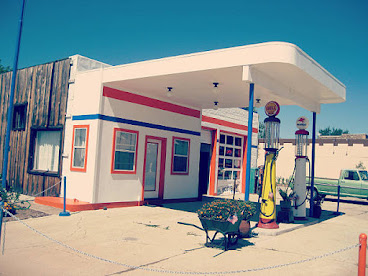What Happens to Fuel Stations When We All Go Electric? - Mina Gorgyos
Electric cars are a relatively new phenomena for many of us, yet most of us know of someone who has an electric vehicle, whether that's a Nissan Leaf, BMW i series, or a Tesla.
I've been on the periphery of conversations about EVs for a few years now, and two of the biggest challenges I keep hearing about are batteries and charging. Both of these issues combine to create one of the top 4 barriers to adoption; range anxiety.
In recent years Tesla has really pushed the envelope of both battery technology and car design to achieve a range that is comparable to many family diesel cars on the market today.
The chart below shows the range (distance) the top performing electric cars can travel before they need to be recharged. it should be noted that these ranges are as provided by the manufacturer and are achieved in controlled (lab) conditions, so in the real world, they might very well differ.
Refuelling Electric Vehicles vs Internal Combustion
The internal combustion engine has been around long enough for every driver (and want-to-be driver) to understand how vehicles of this nature need to be fuelled.
Most people tend to run their tanks from brim to the orange warning light before venturing to refuel. Of course, there are reasons to keep your tank topped up more regularly than that, but most of us wouldn't think of putting a litre in the tank now, just because we can.
But that's how many EV owners need to think, especially if they own a car with shorter range, or slower charging capabilities.
Is there still a place for fuel forecourts in an EV future?
There's a lot of talk about democratisation of charging, and how blockchain can help create a way to share energy, and create networks of residential and business property charging points. With these new decentralised charging options popping up, will we still see BP, Shell, Chevron and private filling stations along the roadside?
BCG and Arthur D Little think, yes, but they will be very different places than what we experience today. Fundamentally, fuel retailers will need to shift from selling fuel ("wetstock") to thinking about the customer, and the experience that customer is expecting.
Today when we pop to the filling station, it takes a minute or two to fill up the tank, and a few more minutes to complete the transaction. Typically, I'm done within five minutes, any longer and it's "a drag". Charging batteries takes longer, much longer, and even if we imagine we won't stay for a full charge (which could take hours), the amount of time required to top-up the car is going to be more than it is today.
With that in mind, we'll see more charging points popping up in places people naturally have higher dwell times, such as shipping centres and restaurants, and we'll also see filling station evolve to encourage higher dwell times.
Filling stations will become destinations in their own right, and we're seeing this already. Many forecourts are already filling the need for local convenience stores, many are re-developing their space to accommodate coffee shops, restaurants and even places for people to open their laptops and settle down to do a little work.
As the fuel mix provided by filling stations changes to include more alternative fuels (such as electric and hydrogen), they will need to adapt their offerings to both suit the new needs of their customers, and to attract new types of customers. For this, data will be crucial.


Comments
Post a Comment